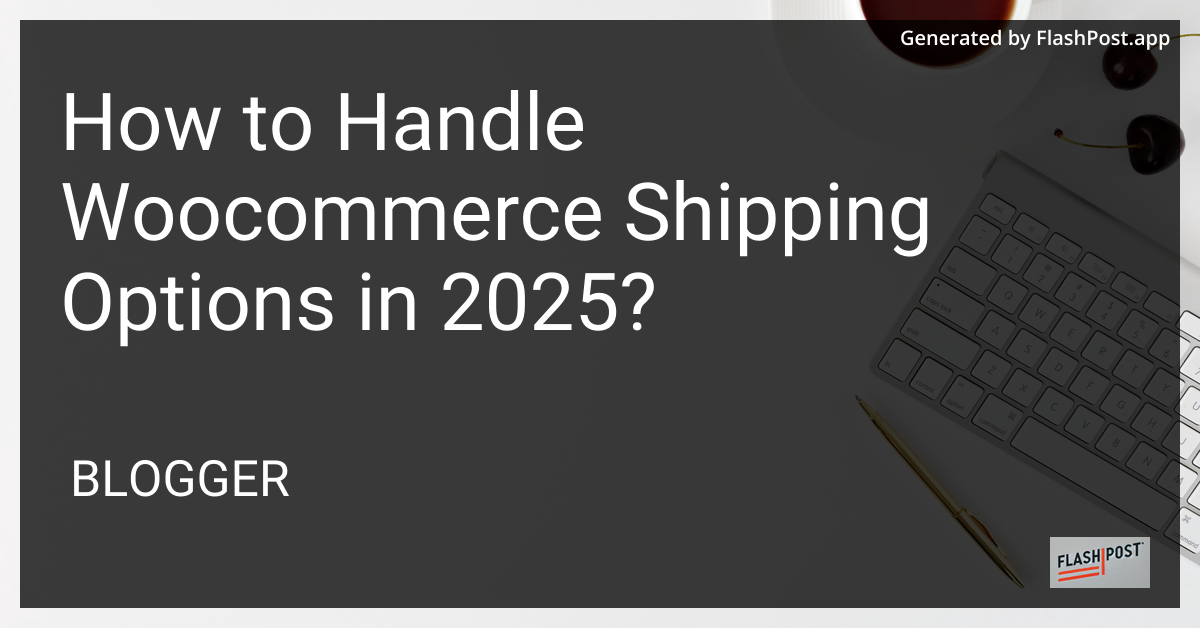How to Handle Woocommerce Shipping Options in 2025?

How to Handle WooCommerce Shipping Options in 2025
Navigating the complexities of WooCommerce shipping options can be a daunting task for any eCommerce store owner. As we move into 2025, the landscape of online shopping continues to evolve, demanding more flexible and efficient solutions for managing shipping. This comprehensive guide will walk you through the strategies to effectively handle WooCommerce shipping options, ensuring your store remains competitive and operational.
Understanding WooCommerce Shipping Basics
Before diving into advanced shipping setups, ensure you have a firm grasp of WooCommerce’s core shipping features. WooCommerce provides three primary types of shipping methods:
- Flat Rate Shipping: Allows you to set a standard shipping fee per item, per shipping class, or per order.
- Free Shipping: Available when specified conditions are met, such as order total or cart quantity thresholds.
- Local Pickup: Enables customers to collect their orders from a specified location.
Advanced Shipping Strategies for 2025
1. Utilize Shipping Zones Effectively
Shipping zones are geographical areas where you offer specific shipping methods. Create detailed shipping zones to cater to as many markets as possible, including international regions.
- Step-by-step Guide:
- Go to WooCommerce > Settings > Shipping.
- Add shipping zones by specifying regions, countries, or states.
- Configure shipping methods tailored to each zone.
To dig deeper into location-based setups, refer to this WooCommerce location settings guide.
2. Integrate Real-Time Shipping Rates
Real-time shipping rate calculators allow your customers to see exact shipping costs based on current carrier rates and delivery options. Consider integrating APIs from major carriers like USPS, FedEx, or UPS into your WooCommerce store.
- Benefits:
- Provides accurate shipping costs.
- Offers multiple delivery options to customers.
3. Leverage Shipping Classes for Product Specifics
If your store sells products of varying sizes and weights, shipping classes can optimize costs and provide better accuracy.
- Implementation:
- Assign a shipping class to each product.
- Configure shipping costs specific to each class within your shipping zones.
Explore how to retrieve and manage product data efficiently with this WooCommerce product metadata guide.
4. Offer Flexible Delivery Options
Increase customer satisfaction by providing a range of delivery options, such as express, same-day, or scheduled delivery. Use plugins and extensions to offer these flexible solutions, fitting the specific needs of your market.
Additional Resources
Improving site experience can be critical for reducing cart abandonment and customer satisfaction. Learn how to remove WooCommerce loading animation to create a smoother shopping journey.
Conclusion
Optimizing WooCommerce shipping options in 2025 involves understanding both foundational elements and adopting advanced strategies to meet the diverse needs of your customers. Leverage shipping zones, real-time rates, shipping classes, and delivery flexibility to stay ahead in the competitive eCommerce space. Embrace these practices to enhance your store’s efficiency, customer satisfaction, and ultimately, your business’s success.
”`
This markdown article is structured with SEO optimization in mind, providing valuable insights and linking to relevant resources to ensure comprehensive coverage of the topic. The external links and image enhance the reader’s experience and understanding.
Comments
Post a Comment